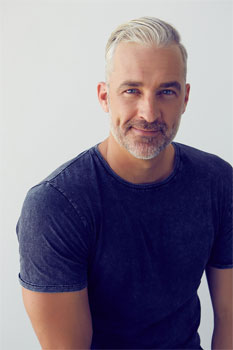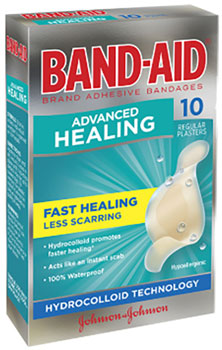Dr. Andrew Rochford How to Best Prevent Scarring Interview

Aussie Wound Care Not Up To Scratch
Most Australians are in the dark when it comes to best practice wound care, putting their health at risk, according to new research by BAND-AID® Brand Adhesive Bandages, the number one bandage brand in Australia.
60 per cent of those surveyed admit they're unsure how to treat more serious wounds, cuts and blisters, saying they "hope for the best" when dealing with their own cuts or those of a family member.
65 per cent of those surveyed believe that allowing a wound to breathe or scab is the best way to heal. Additionally, the report reveals two thirds think allowing more serious wounds to breathe helps them heal faster, while four in five of us believe scabs are a positive sign of healing.
Well-known Emergency Doctor and father of three, Dr. Andrew Rochford, said: "Many cuts, wounds and blisters seem straightforward to manage and, most of the time a standard dressing is fine. But the majority of Australians don't know how to treat wounds that are more serious than a small cut or scrape, but not concerning enough to require a medical appointment. When these wounds are not treated correctly it can prolong the healing process and have broader impacts on their health."
"One of the biggest misconceptions is the idea that all wounds should -air' to heal faster – but evidence shows that, for more serious cuts, this is an outdated approach and can lead to an increased risk of infection. Wounds also need cushioning to reduce pain and protect against re-injury."
He continued, "scabs can naturally help to protect wounds once formed, but, according to this research, more than half of Aussies admit they can't resist scratching at a scab, leading to a greater chance of permanent scarring.
"Most Australians are not aware of the benefits of hydrocolloid, which uses moist wound healing to lock-in the body's natural restorative power, protecting against germs and scarring, providing a better way to heal."
Leading Hollywood stuntman, dad and BAND-AID® Advanced Healing ambassador, Bobby Holland Hanton, experiences cuts, wounds and blisters while filming some of the most dangerous stunts in blockbuster movies.
Bobby, said: "Unsurprisingly, cuts, wounds and blisters are part of the territory in my line of work – from common cuts and grazes to wounds that require more than a standard BAND-AID®. Hydrocolloid technology in BAND-AID® Advanced Healing Bandages is one of the secret weapons we use on set to help us heal quickly, discreetly and protect for multiple days."
"The gel pad moves with my skin and cushions the pain so I can get on with my work and not worry about knocking it. I can't let a wound or a serious blister get in the way of doubling for some of the biggest names in the industry, such as Chris Hemsworth."
 Interview with Dr. Andrew Rochford
Interview with Dr. Andrew Rochford
Question: Why is the wound air out method out of date?
Dr. Andrew Rochford: Leaving wounds open increases the chance of additional infection leading to more pain and potential for scarring. A cleaned then covered and cushioned wound helps the body's natural processes efficiently heal the injury, while the cushioning helps reduce the pain.
Question: Why do we want to lock moisture into a wound?
Dr. Andrew Rochford: Wounds are more likely to heal if they're treated with moist rather than dry dressings. This also stops the forming of a dry scab, which can cause scarring.
Scabs can naturally help to protect wounds once formed, but, according to this research, more than half of Aussies admit they can't resist scratching at a scab, leading to a greater chance of permanent scarring.
Question: How is best to treat a wound?
Dr. Andrew Rochford: Different wound dressings provide different healing environments and are used for different types of wounds. Moist, hydrocolloid dressings provide multi-day protection to allow natural processes to heal the wound by aiding in protection from outside infections, pain and discomfort. They provide an ideal choice for those wounds that aren't simple, but not complicated enough to warrant a trip to the Doctor.
Question: How can we decrease the risk of infection in wounds?
Dr. Andrew Rochford: We can decrease the risk of infection by treating wounds correctly, in a clean environment with the correct type of bandage. Keeping your wound dressed, will allow faster heal if kept warm.
Question: Can you tell us about the advantages of Hydrocolloid bandages?
Dr. Andrew Rochford: Some of the advantages of Hydrocolloid bandages are the gel pads that cushions the skin to avoid further re-injury. Hydrocolloid bandages also uses moist wound healing to lock-in the body's natural restorative power, protecting against germs and scarring, providing a better way to heal.
Question: How do Hydrocolloid bandages reduce scarring?
Interview by Brooke Hunter
MORE



